-
Car Reviews
- All reviews
- Midsize SUVs
- Small cars
- Utes
- Small SUVs
- Large SUVs
- Large cars
- Sports SUVs
- Sports cars
- Vans
Latest reviews
- Car News
-
Car Comparisons
Latest comparisons
- Chasing Deals
The eccentric, electric Countryman is armed with enough practicality to lure even the most sensible of buyers
The electric age is a transition that seems almost custom-made for Mini.
Small cars and SUVs are some of the easiest to convert into electric vehicles as they often only travel short distances, generally don’t carry many people and recoup a significant amount of energy in city-style stop-start driving.
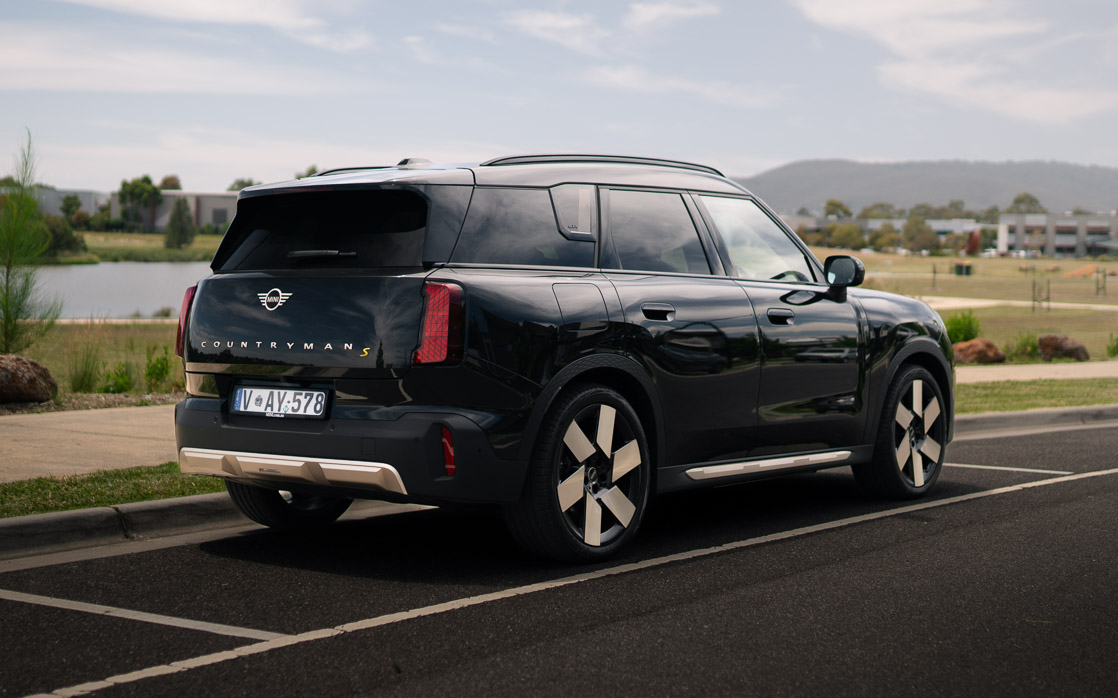
Yet Mini isn’t putting all its eggs in one basket, offering the increasingly important new-gen Countyman in petrol and electric guises, just like the Cooper small hatch.
Following the related and generally impressive BMW iX1 to market, Mini’s new-generation Countryman arrives with a more practical interior and surprisingly accessible price tag.
These attributes saw the Countryman go further than expected in our Car of the Year coverage, easily earning its stripes. Impressively, it was the electric SE version — rather than the petrol variant — we have on test that made the biggest splash.
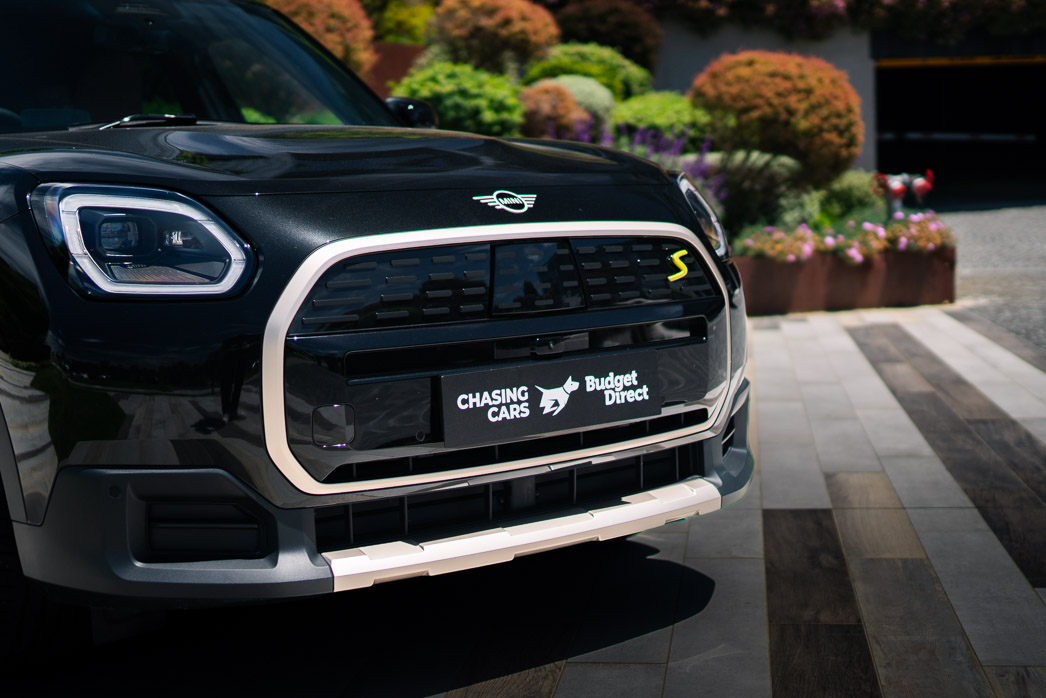
So, has the Countryman transcended its niche status as a fun and charming small SUV into something a pragmatic buyer should actually consider?
The electric Mini Countryman range is offered in front-drive single, and twin-motor all-wheel-drive variants, known as the E and SE, respectively.
Both feature a NCM 64.6kWh usable battery size and the less punchy E starts at $67,990, before on-road costs, with a greater range of 462km (WLTP). The SE opens at $72,990 with an extra 70kW and nearly twice the torque, though its quoted driving range falls to 432km.
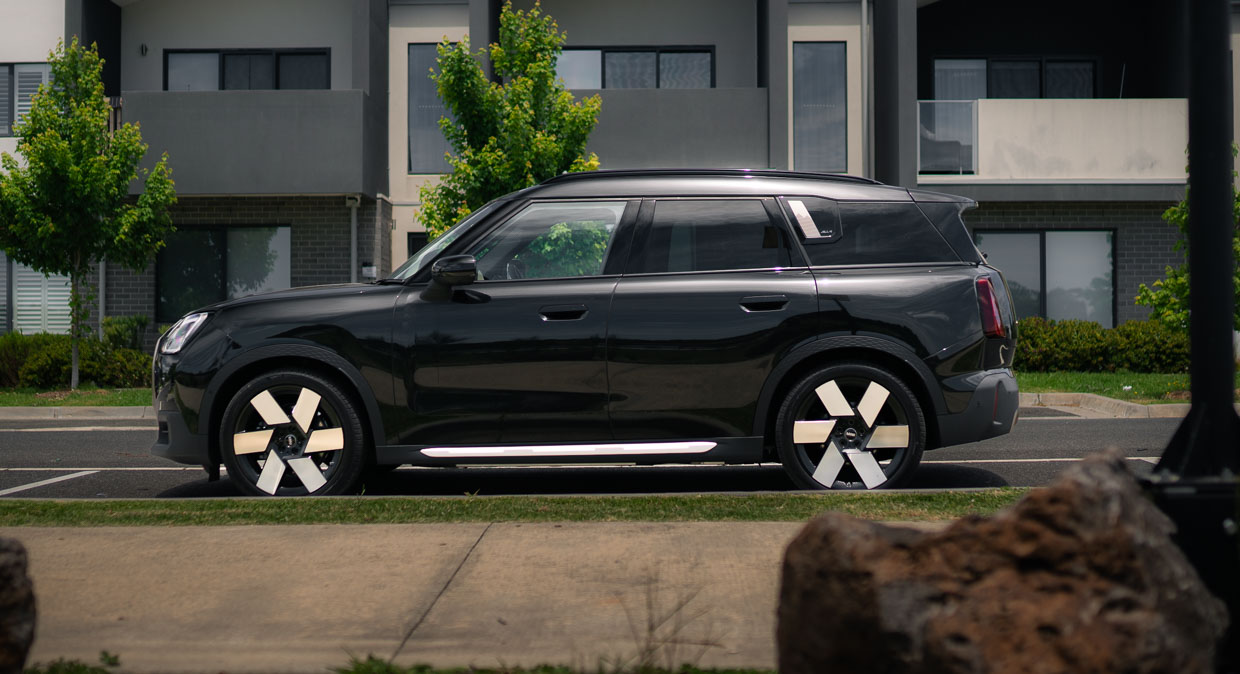
Each are offered in three sub-trim levels, with the SE starting with the Classic, moving to Favoured you see here and then headline JCW Sport trim — not to be confused with a true JCW offering.
For about $3000 more than the Classic, the Favoured offers a few meaningful upgrades, including larger and more stylish 19/20-inch wheel options rather than the Classic’s 18s, a lovely Harman Kardon sound system and electric front seat adjustment.
It’s a trade-off we think is more than worth it for the price, but the JCW Sport trim above it is less enticing. Aside from the addition of high-performance brakes, the changes are simply cosmetic and will come down to personal taste.
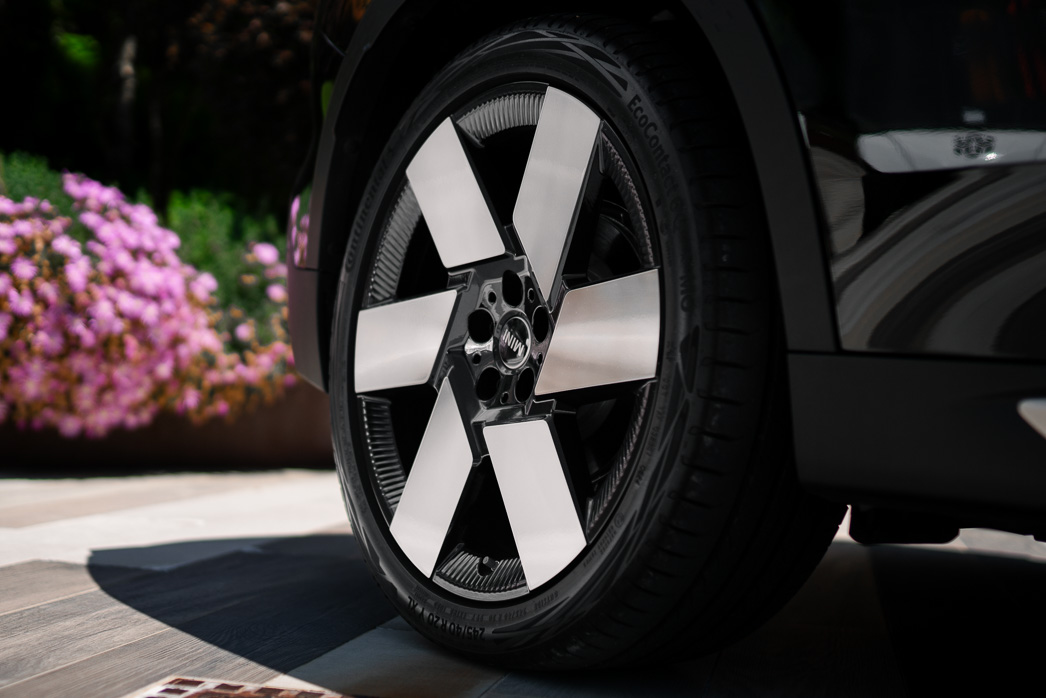
Below are some of the Favoured’s notable features:
The list price of $75,990 for the Favoured is significantly cheaper than the related BMW iX1 xDrive30 ($86,800) or equivalent Mercedes-Benz GLA 350 4Matic ($102,900). If you step up in size in a mainstream rival, like a Hyundai Ioniq 5 long-range RWD model ($75,800), you’ll find yourself with less equipment and verve than the Mini.
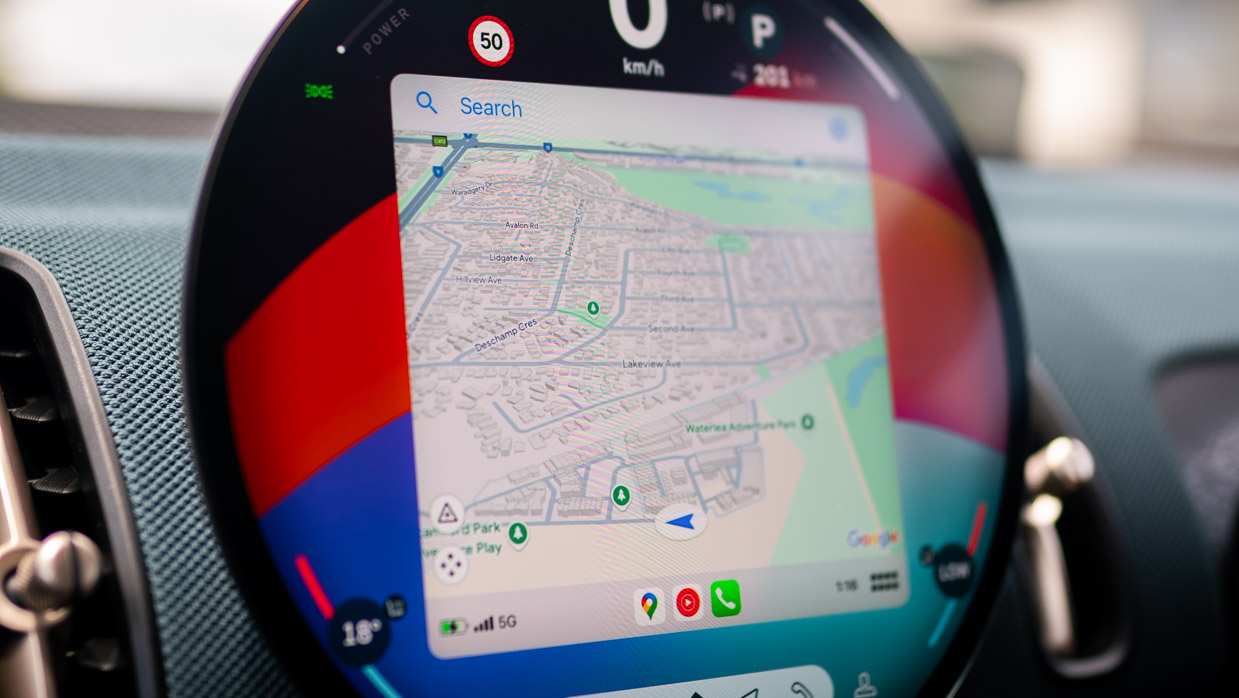
The closest match we can find for an AWD-equipped model that doesn’t hail from China is the Subaru Solterra Touring at $76,990, but the smaller Mini is levels more complete in equipment and execution.
But the options shipped in from China are not to be ignored; with the Zeekr X AWD ($64,900), Volvo EX30 AWD ($71,290) and EX40 ($81,990) small SUVs, along with the Smart #1 Brabus ($67,900), all now available to Aussie buyers. While not a segment rival, the popular, larger Tesla Model Y (Long Range AWD, $68,900) is never for from any electric SUV conversation.
Minimal interiors are all the rage in 2025, but Mini has been doing this since many of its customers were scooting toy cars across the carpet.
Perhaps that’s why Mini is so good at it.
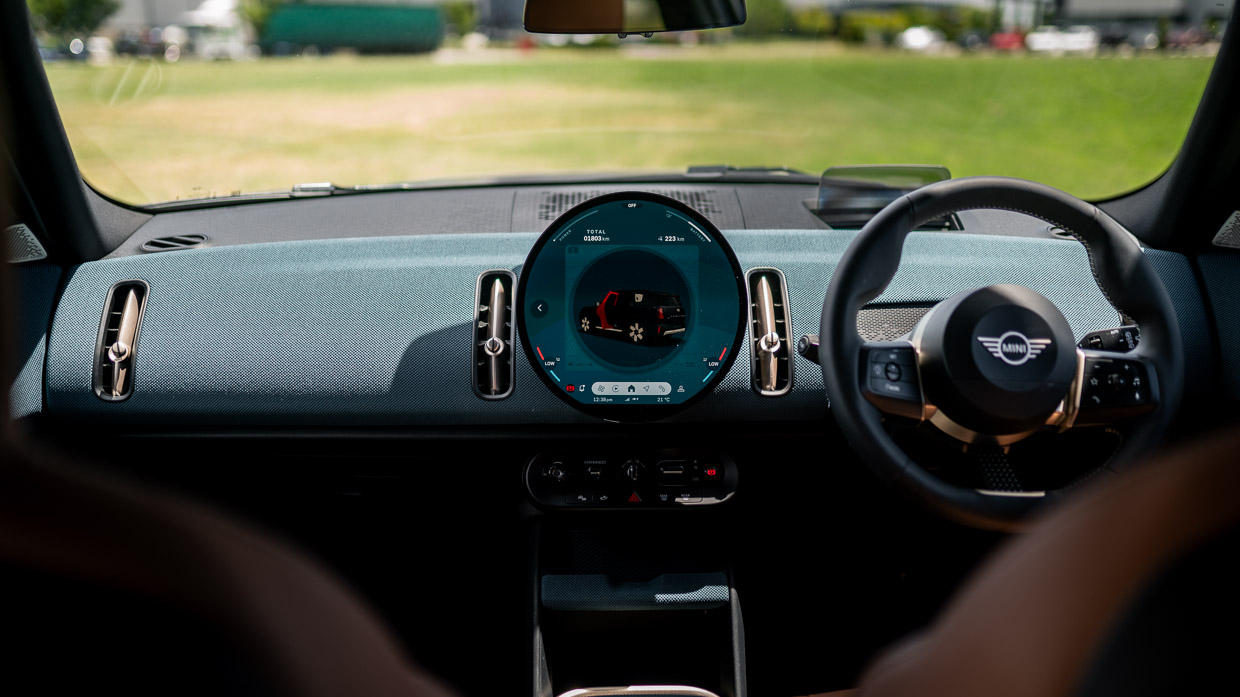
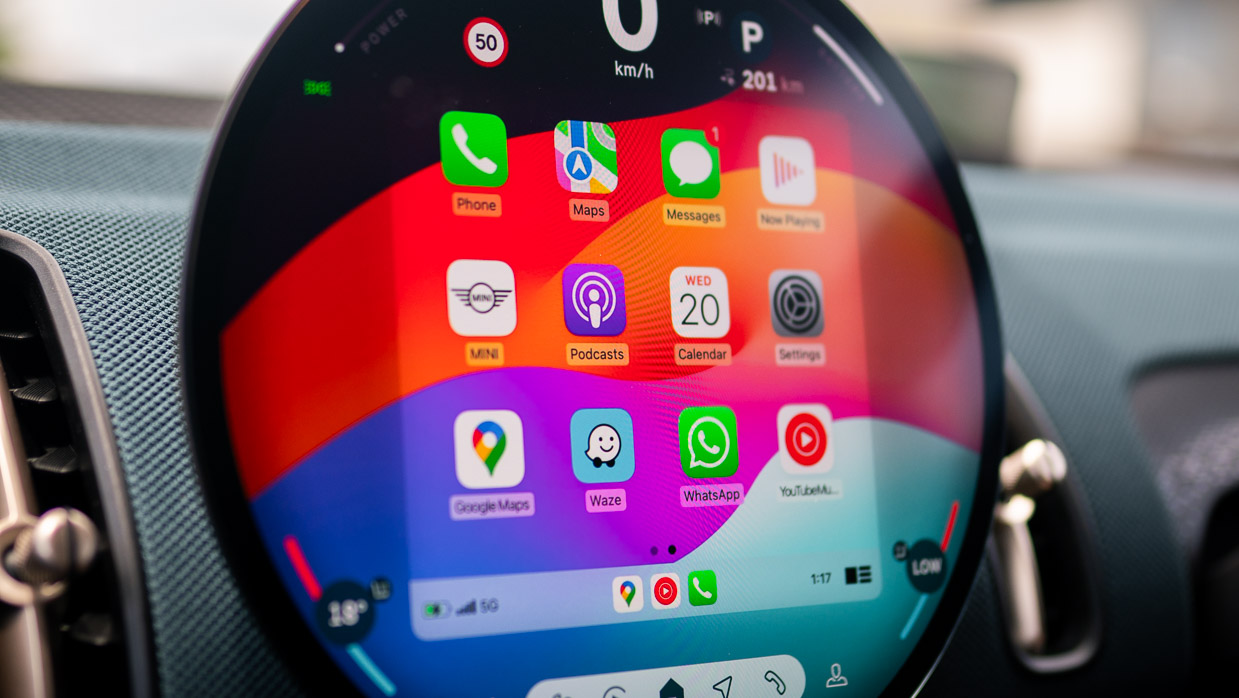
The niche brand has been harking back to its heritage with a ‘circular’ central display for years, but with Mini’s latest products, the touchscreen now proudly occupies all 240mm diameter of circular real estate with a crisp OLED screen that serves as the overall command centre.
Showing its practiced hand in this area, there is limited glare in the harsh Aussie sun, and it’s matched with a sharp head-up display so drivers aren’t constantly taking their eyes off the road — like in, say, a Tesla Model Y.
Mini’s software presents a steeper learning curve than some, with a large amount of information and options presented at all times. After spending more time with the Countryman, the efficiency of this layout becomes clearer, though.
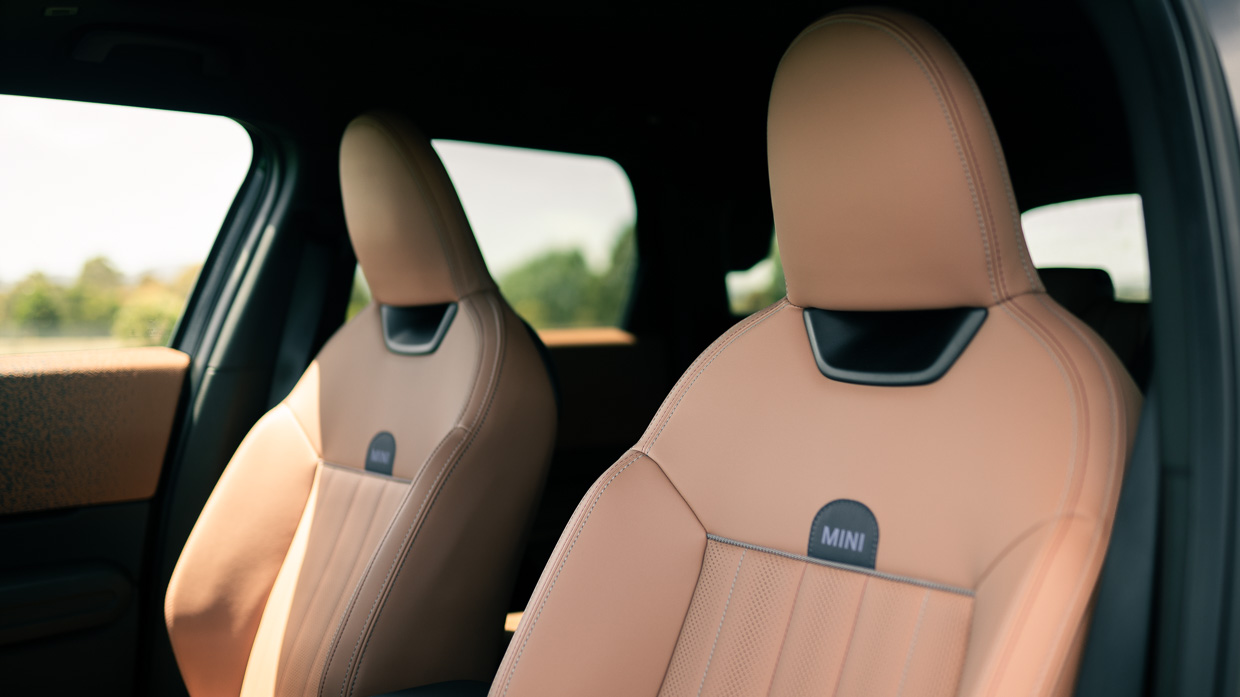
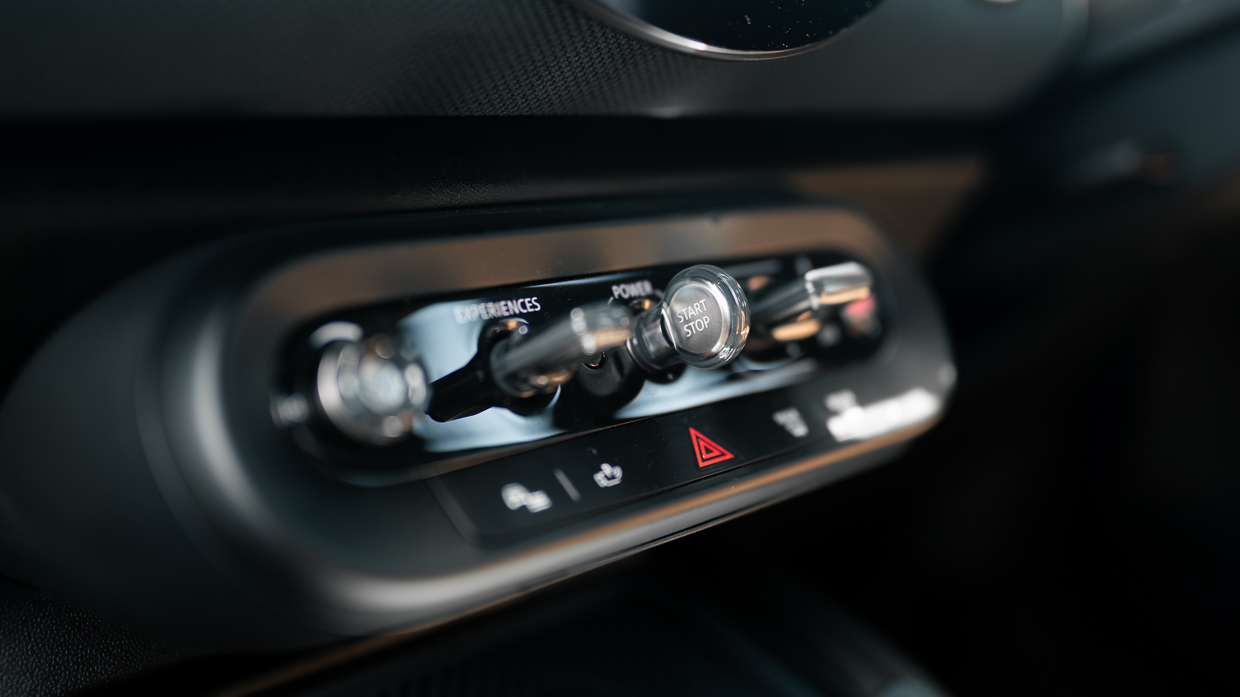
The theatre of the design is the star, with a series of joyful toggles and switches below the screen that cycle through the drive modes, called ‘Experiences’, that affect the display theme, multimedia sound profile and even the driving experience with options such as “Go Kart Mode”.
Dancing on the edge of being a gimmick, the fun modes were a delightful touch that appealed to the Chasing Cars team.
One key reason to upgrade to the Favoured trim is the 12-speaker Harmon Kardon which offers remarkable clarity and depth in the Countryman’s cabin. It combines well with the hushed drivetrain and decent sound deadening to make comprehensible, low-volume listening at highway speeds a reality.
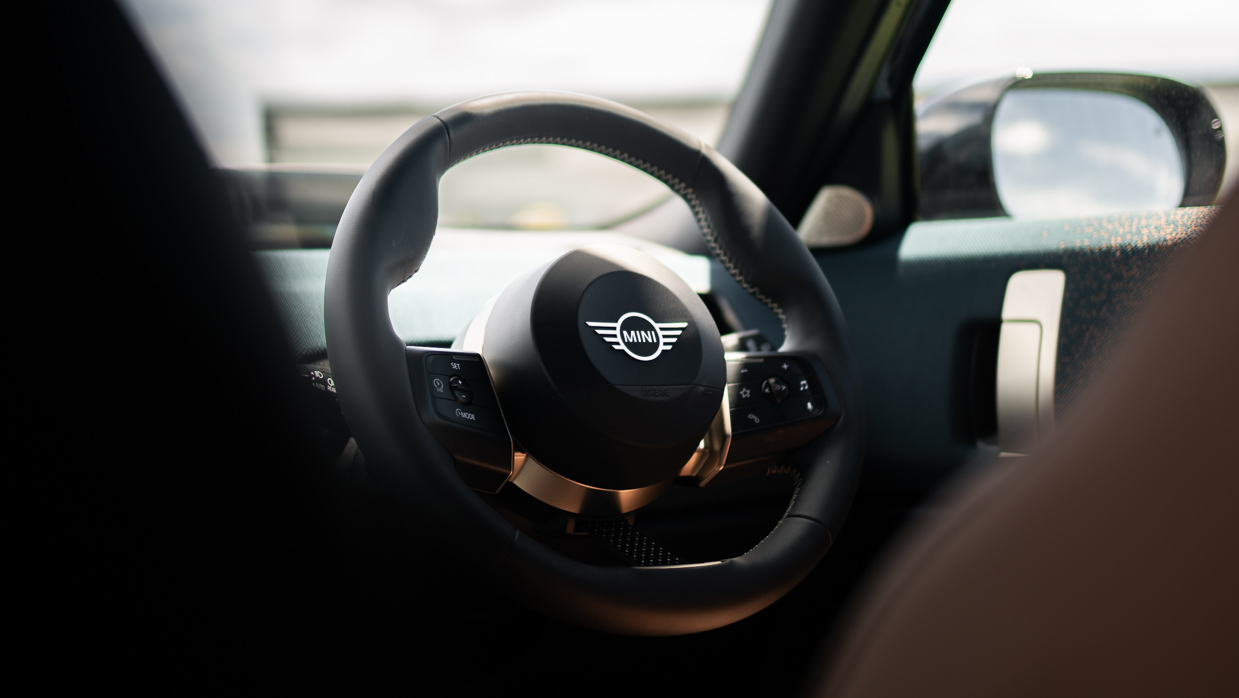
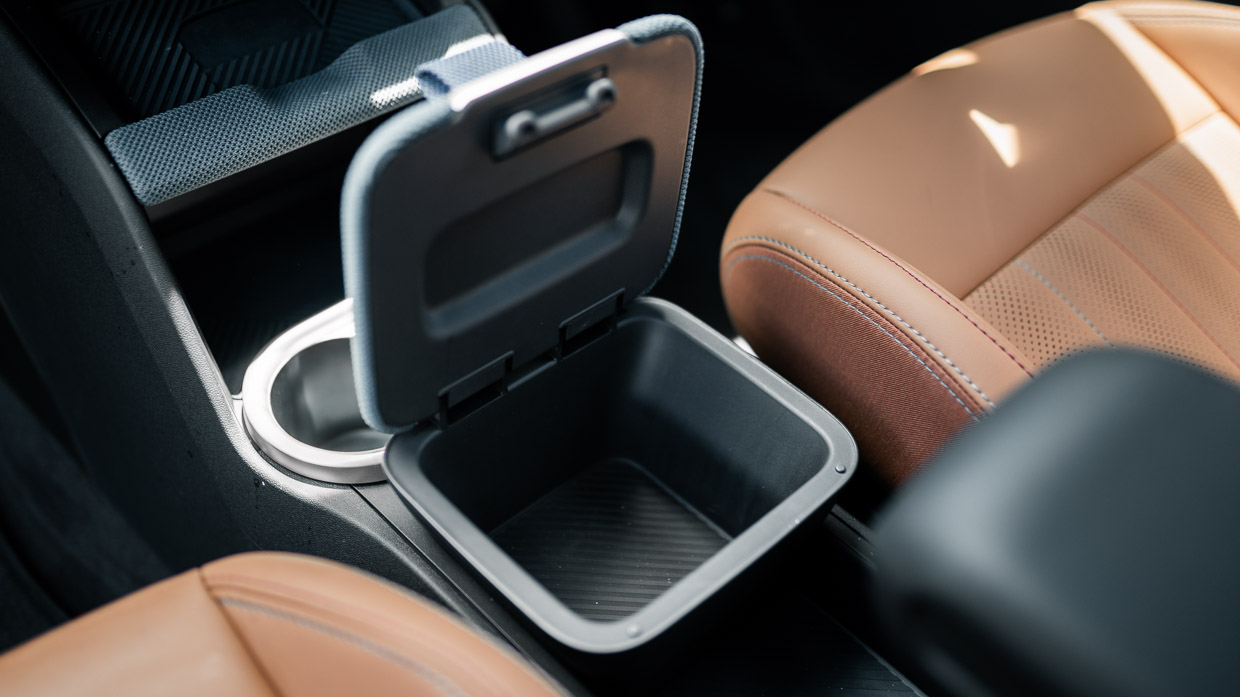
On a more practical note, the seats themselves are firm but supportive and generally comfortable, with enough room in the default position to accommodate my leggy frame at 182cm tall.
Despite a litany of nooks and crannies about the cabin, incidental storage feels a bit lacking, as many areas are too small or oddly shaped to stow items without a bit of Tetris action.
Moving to the second row, there is still plenty of space to seat an adult, even behind my own driving position.
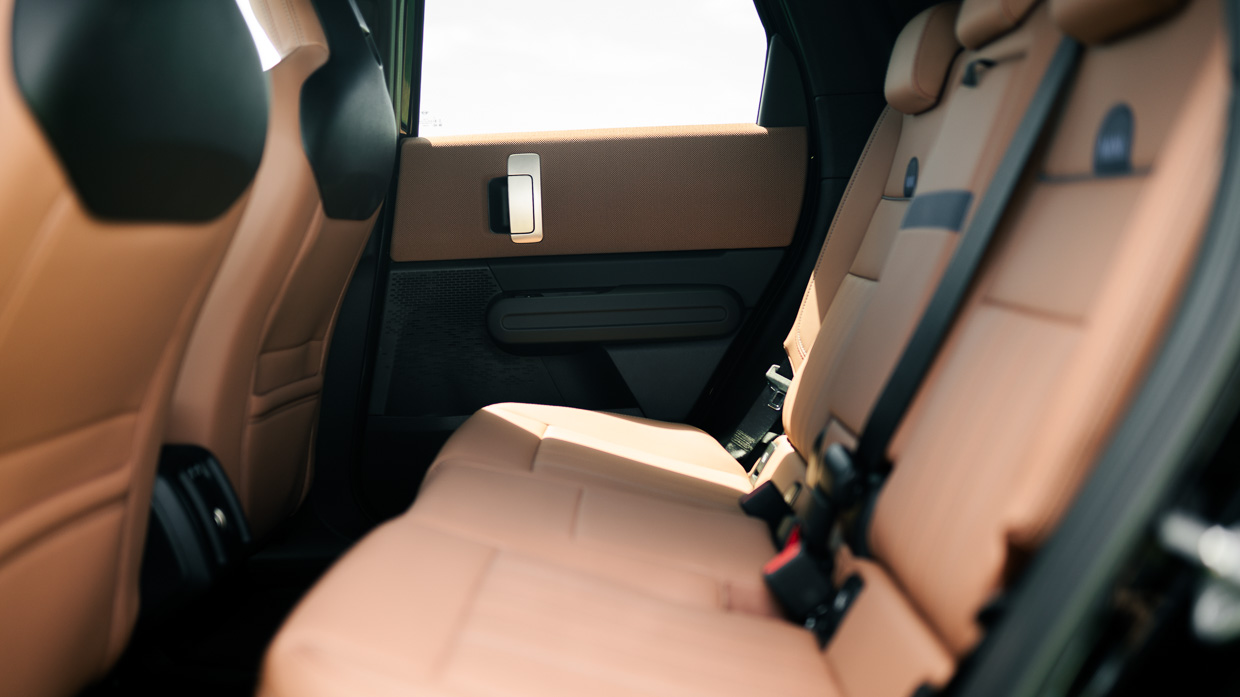
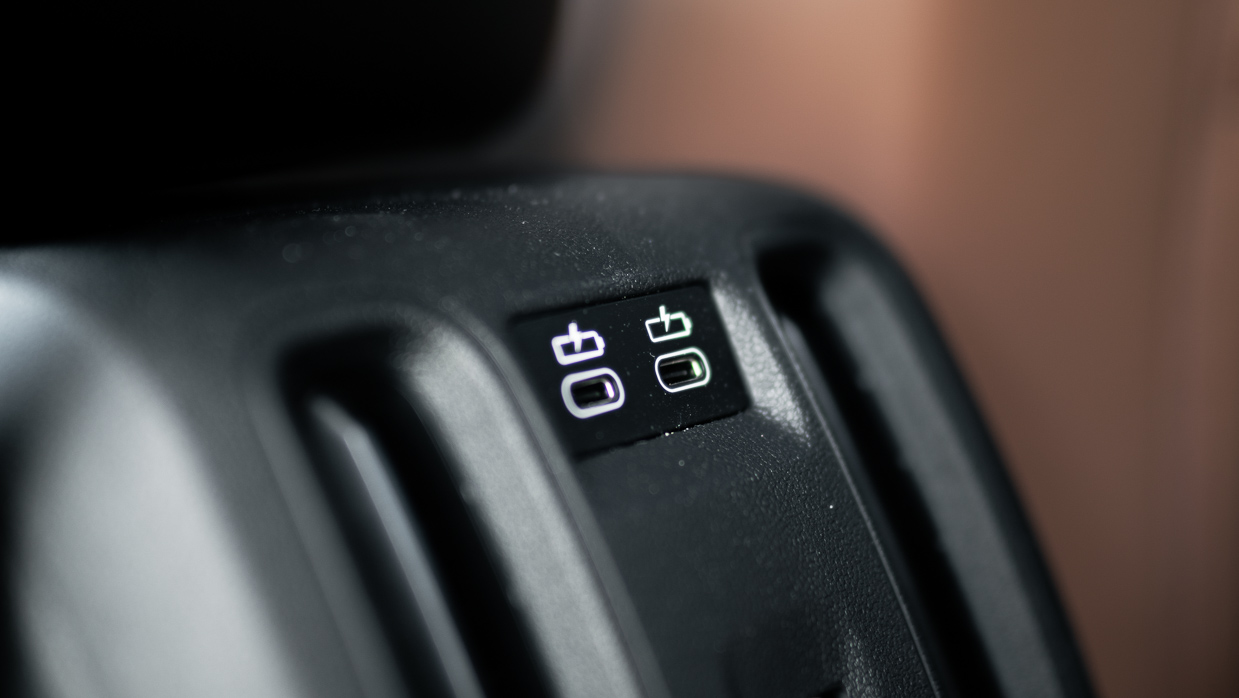
There’s even enough room to fit a rear-facing baby seat, which would have been impossible in small SUVs only a few years ago. The Countryman, like many others, has not only grown, but also matured in its packaging to the point that it can genuinely serve as a family vehicle.
The tops of the interior door cards are trimmed with a wonderful wool-knit style material which is nice to look at, if a bit abrasive to touch. Though, as a parent, a child rubbing a smuggled-in against the cheese-grater-like texture was a constant worry.
Kid-friendly, this material is not.
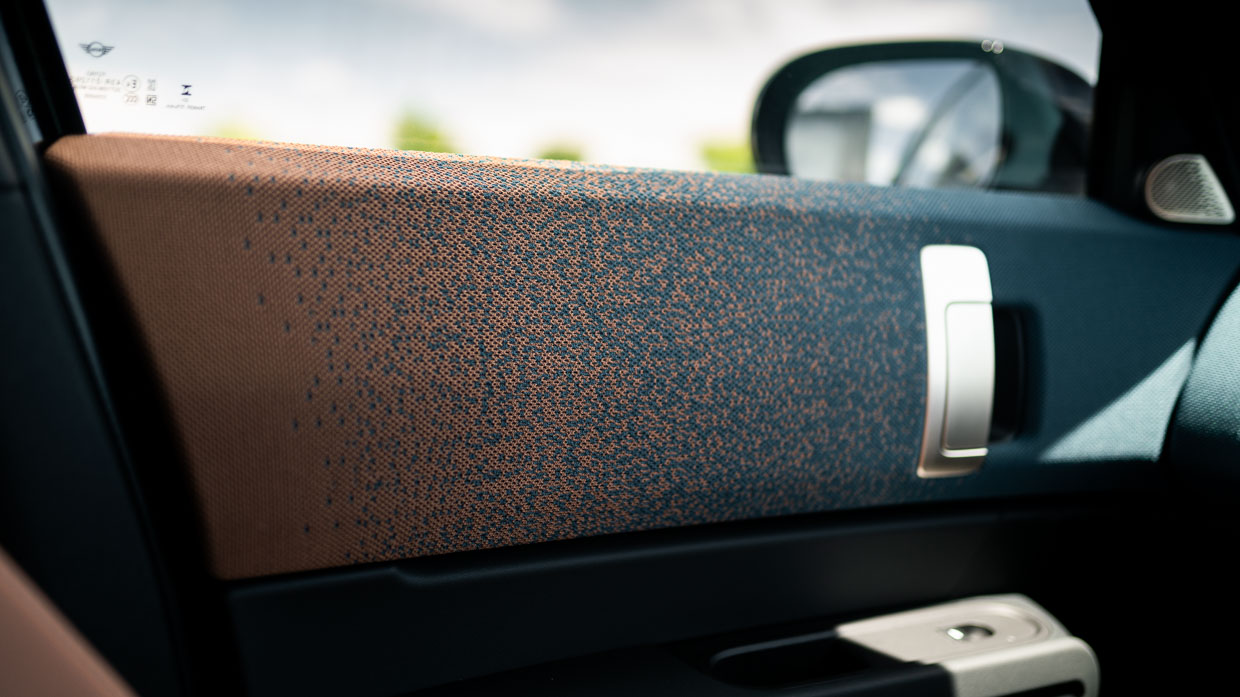
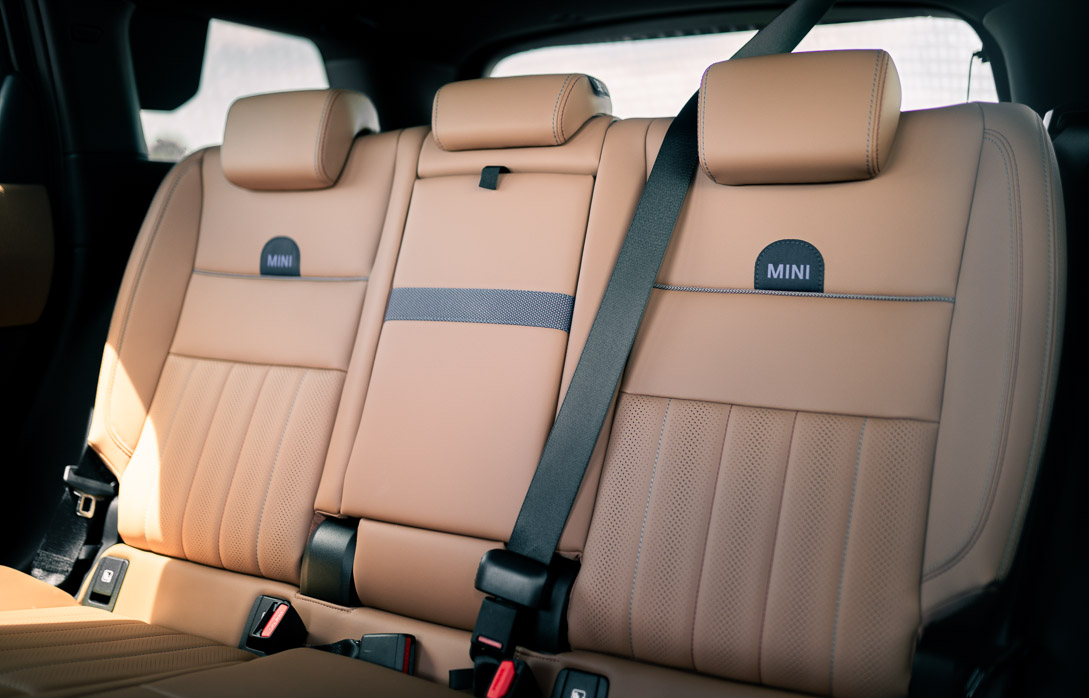
Conversely, Mini pays thoughtful attention to detail by switching on the Countryman SE’s surprisingly strong air-conditioning as soon as you open the door, and doesn’t shut it off until you close and lock the doors.
This was a real luxury when strapping the kids into a hot car that had been baking in the sun for hours; saving one from hopping in the front seat first to get the cool air pumping.
The Countryman also wins some practicality points with its boot. The rectangular 460L space swallowed a pram with ease. Additional netting is also provided to secure small items from flying around the boot.
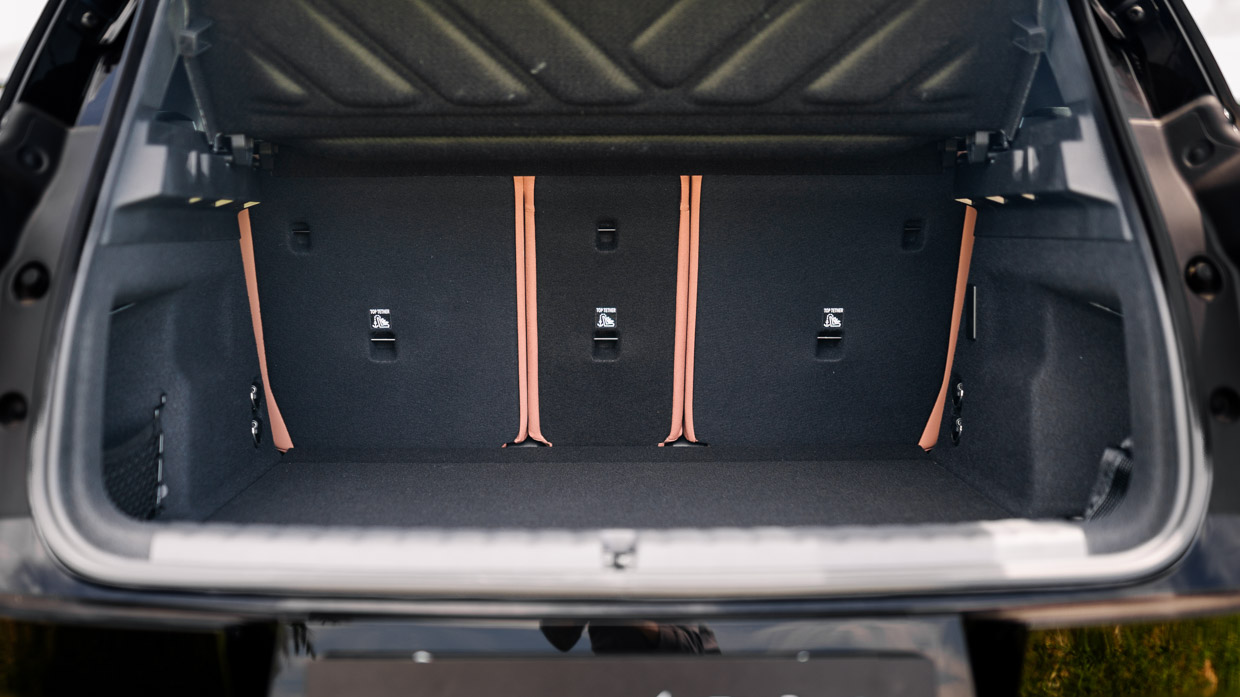
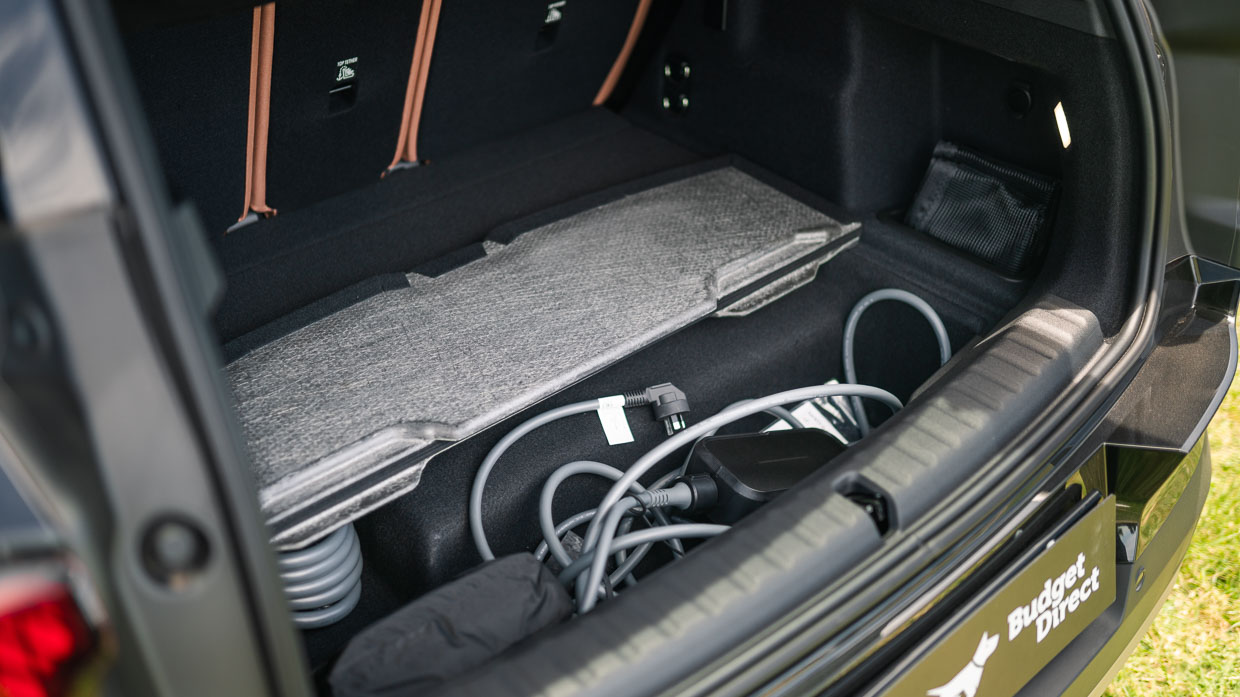
There is no full-size or space saver spare under the floor, which is disappointing even in a typically city-based vehicle such as this one.
While many aspects of the Mini Countryman’s interior appear to put form first, it’s impressive how little these joyful touches impact function.
The high-spec Countryman electric is quick. Quicker than you might think.
The difference between the 150kW/250Nm front-driven ‘E’ and the AWD 230kW/494Nm ‘SE’ won’t be of great consequence for some returning Countryman buyers as the former is still plenty quick when compared with petrol-engine standards.
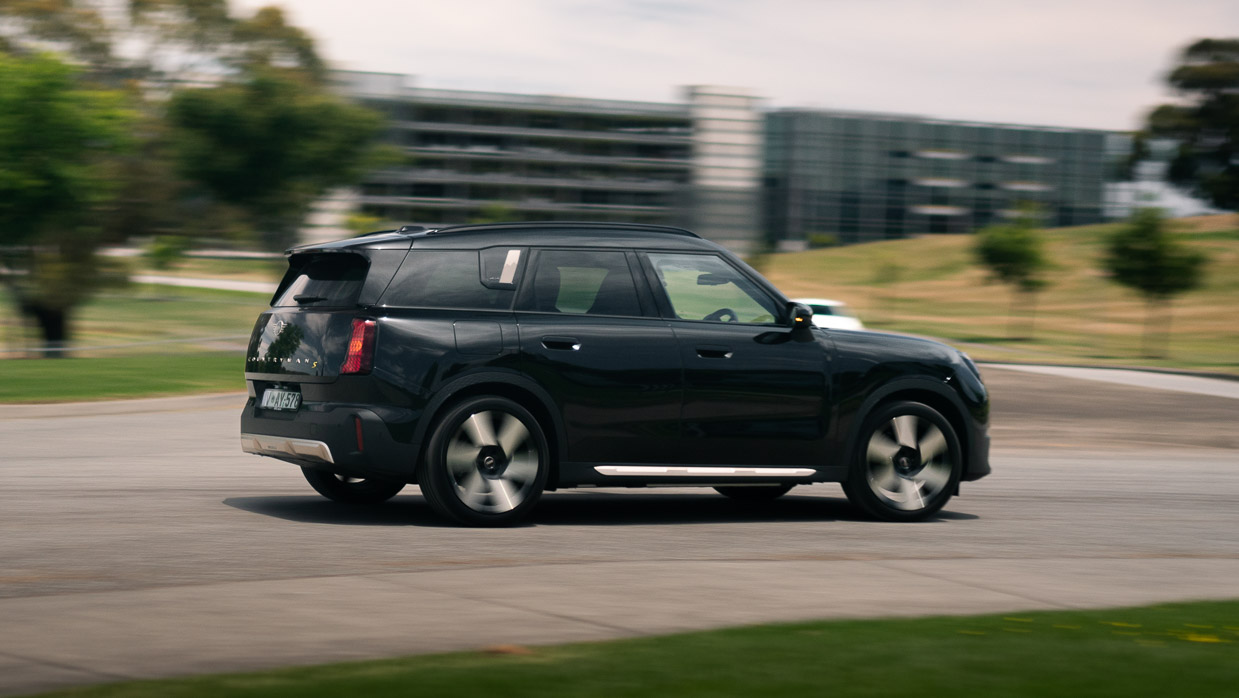
For those who do indulge in the SE, the three-second gap between the 8.6- and 5.6-second 0-100km/h time feels like a world apart, and the talent of the Countryman extends beyond straightline speed.
For a front-biased, all-wheel-drive SUV, there’s a remarkable sense of playfulness to how the Countryman SE drives, with just enough feedback and accuracy from the steering wheel to give the driver confidence to push harder in the bends on pockmarked roads.
With the Countryman scrambling out of corners in haste, it’s comforting that the strong brakes are similarly up for the task as they clamp down progressively underfoot, even if they are somewhat lacking in feel.
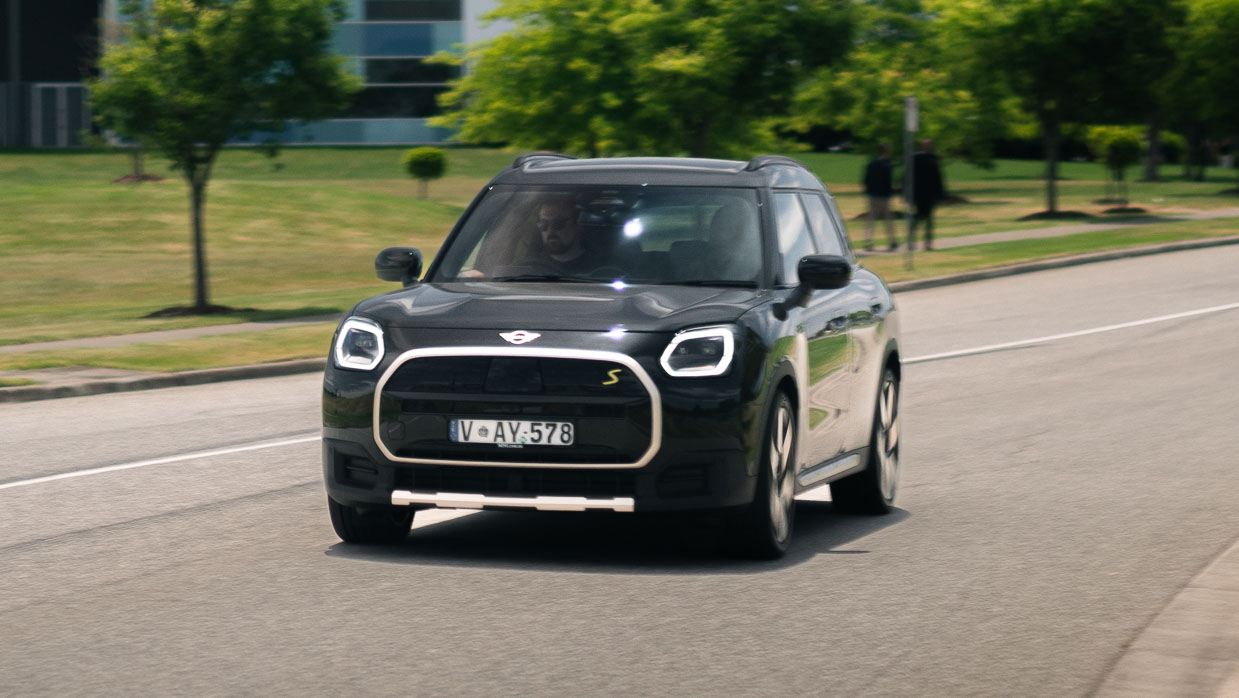
Tying it all together are Mini’s aptly named ‘Experiences’ driver profiles controlled via a toggle that sits just below the main touchscreen.
‘Go Kart’ mode is the most appropriate for hooliganism, and provides a delightful whirring noise that enhances the sense you’re being slingshot into hyperspace between one corner and the next.
The Countryman’s ride is compliant — more so than the BMW iX1 xDrive30 — and yet it retains the brand’s signature agility. It will run out of talent eventually, when its Pirelli P Zero tyres get a polite tap from its 2000kg heft, but its lateral limits are impressive.
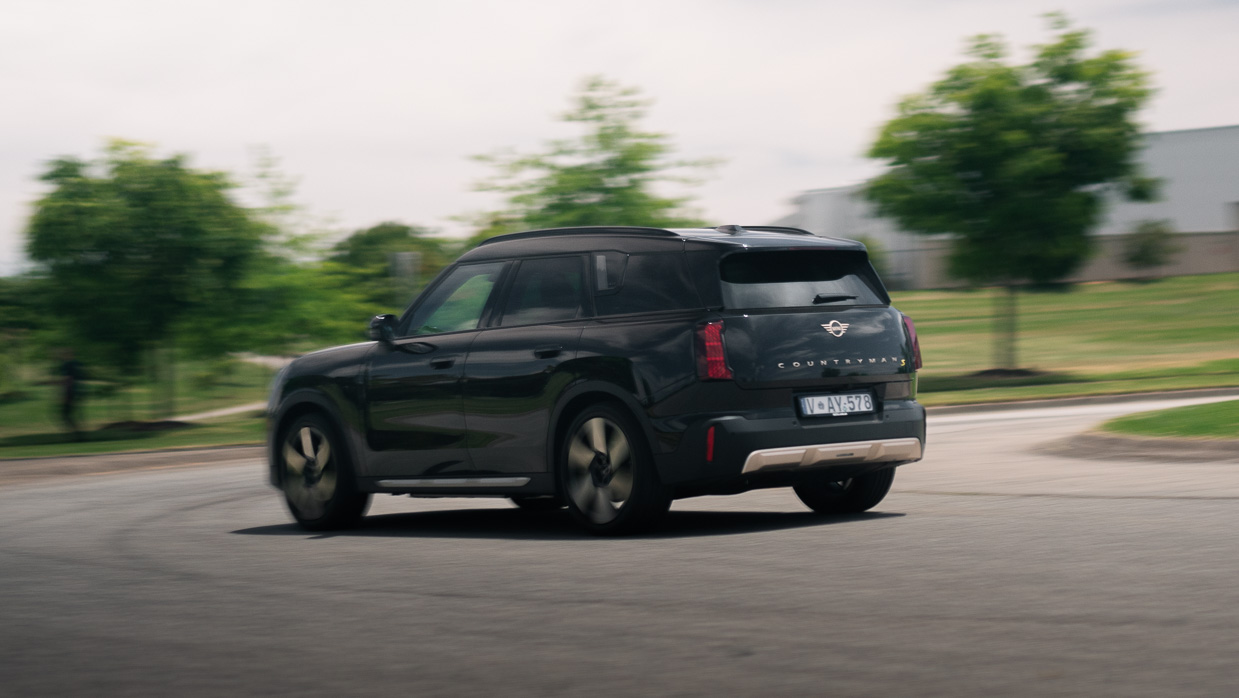
It’s a trade off that becomes worthwhile once you head in town, where small SUVs like this one do most of their driving.
Sudden potholes, pestering road-joins and sharp speed bumps are all felt inside the Countryman but they don’t crash through to your tailbone and the car itself is still small and agile enough to make avoiding obstacles a simple task.
Similarly, the Countryman is a decent highway rider for an EV, with good sound deadening and seat comfort on the odd occasion that you do want to stretch its legs, though if it’s relatively short range and lack of a spare wheel will limit its touring ability.
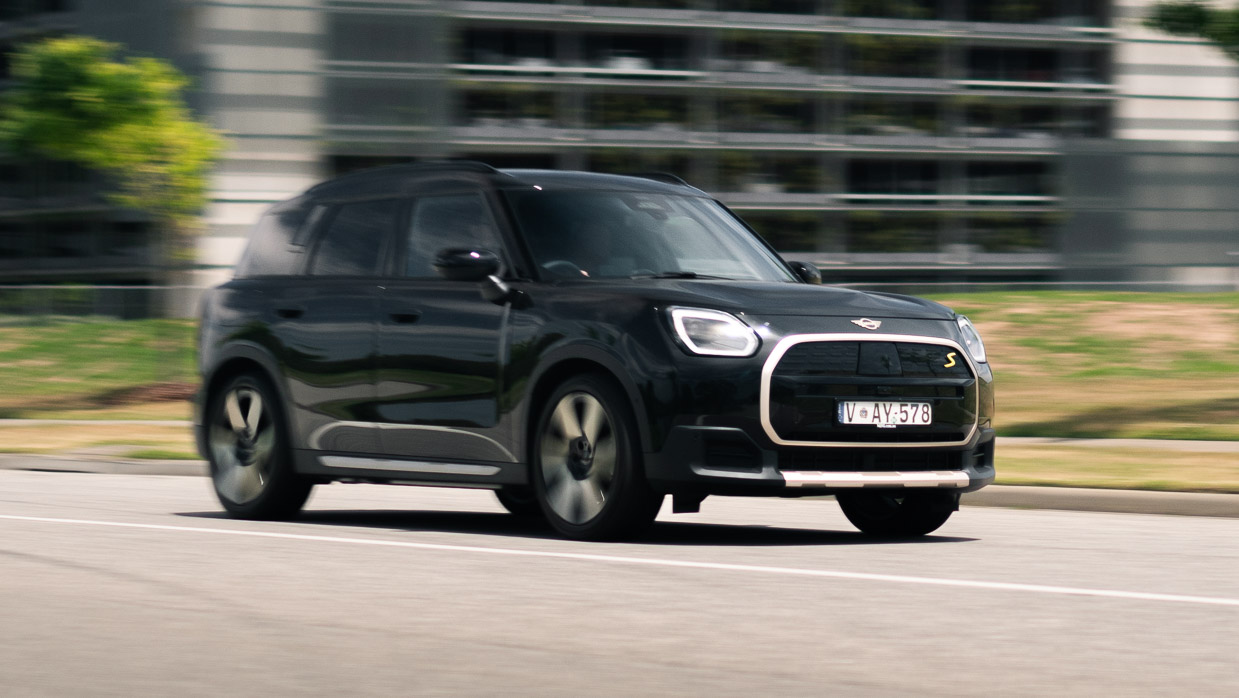
Mini offers a variety of regeneration levels for the Countryman, including a one-pedal driving mode, but the real party trick is the adaptive mode that works with the adaptive cruise control to apply as much, or as little, regeneration as needed in different circumstances.
The Mini Countryman range was given a five-star rating by ANCAP in March 2024, covering both petrol and electric variants. It scored the below ratings in ANCAP’s various tests.
Generally speaking, yes it is a safe car; even if the on-paper subscores aren’t quite as high as its sibling in the BMW iX1 – although the Bimmer was tested under older and less strict 2022 protocols.
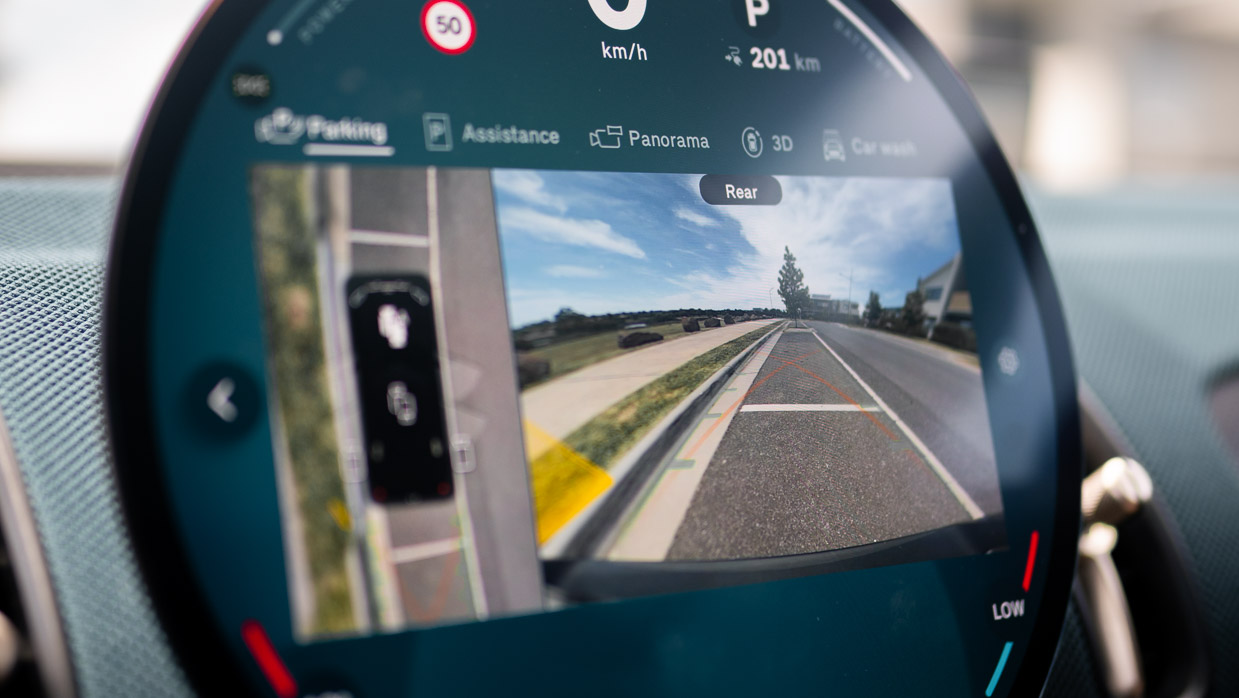
Where both the Mini and the BMW shine over newer competition from China, such as the Zeekr X, which earned remarkable scores in its 2024 test, is in the calibration of its safety equipment in the real world.
Lane-keep assist, adaptive cruise control, speed sign recognition and particularly the driver monitoring systems all offer a slick sense of implementation, to a degree that you barely notice they’re there until they kick in at the appropriate time and do so in a polite manner.
Put simply, they help not hinder, the driver.
The Countryman falls under Mini’s five-year, unlimited-kilometre warranty with separate eight-year/100,000km coverage on the battery and other high-voltage components.
Rather than traditional service intervals, the Countryman SE requires condition-based maintenance and will alert the driver when servicing on components, such as brakes, are required.
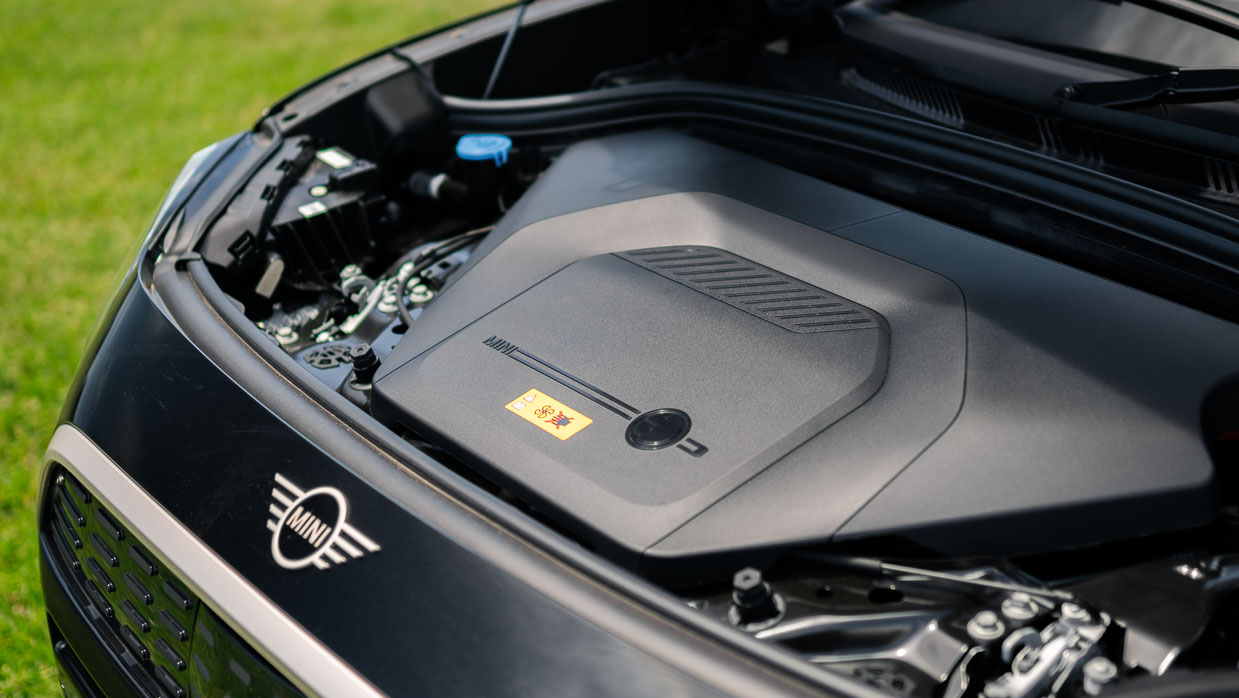
Mini offers maintenance packs in four- and six-year lengths, priced at $1500 and $2225, respectively. This covers basic maintenance and excludes brake pads and windscreen wiper replacement.
Chasing Cars conducted a highway range test in unusually hot 40+ degree weather, meaning the aircon was putting in the work to keep this motoring journalist from ending his trip medium rare.
Despite this, the Countryman clocked a quite impressive 16.1kWh/100km in terms of efficiency, indicating a range of 401km from the 64.6kWh battery. This compares to the stated range of 432km in combined conditions.
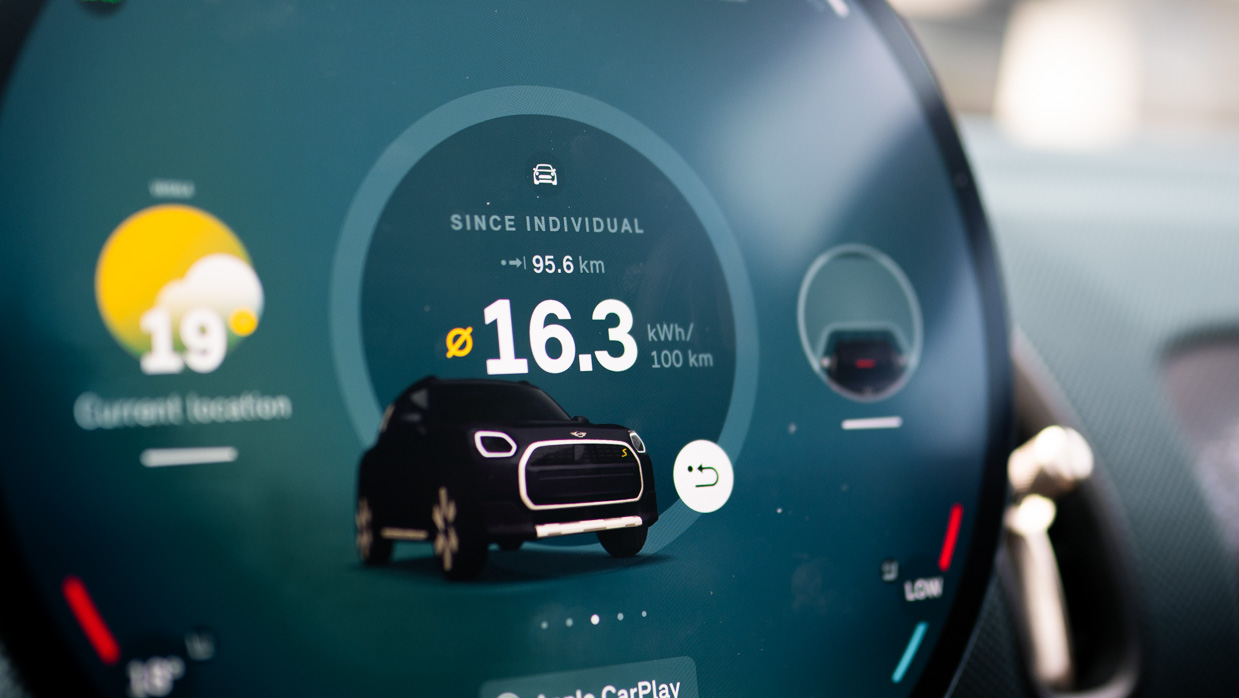
Key rivals include the BMW iX1 xDrive30 (400km), Zeekr X AWD (425km), Volvo EX30 Dual Motor (445km) and EX40 Dual Motor (485km), with only the latter offering a meaningful upgrade in outright range improvement according to the WLTP standard.
Maximum DC charging speeds are slow on paper with a peak of 130kW, but Mini still quotes a 10-80 per cent top-up time of 29 minutes, which is still plenty quick.
AC charging peaks at a more impressive 22kW, promising a flat-to-full time of three hours and 45 minutes.
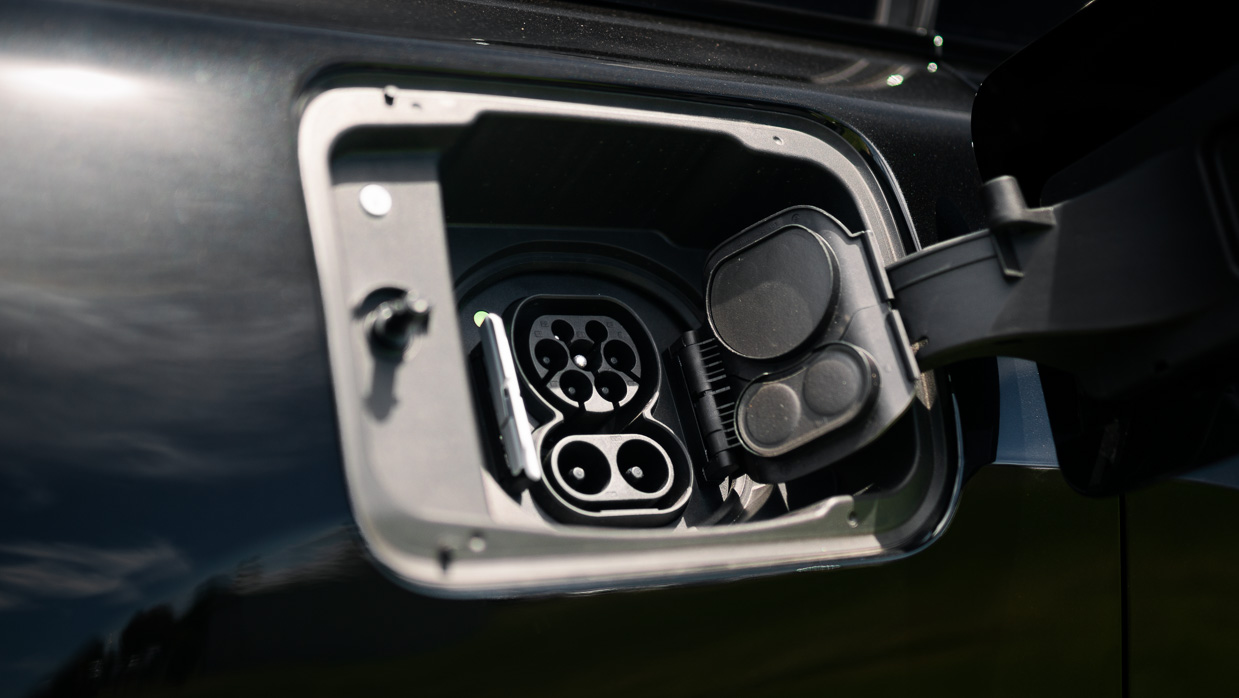
Key to note here though: having charging speeds like that at home will require seriously heavy-duty three-phase wiring to be installed.
By maturing incrementally over its many generations, the attractive and practical Countryman has slipped neatly into the electric age with an air of confidence.
Keenly priced rivals from China, such as the Zeekr X and Volvo EX30, hint at a challenging future ahead for the Countryman but where the Mini pulls ahead is in the difference in execution.
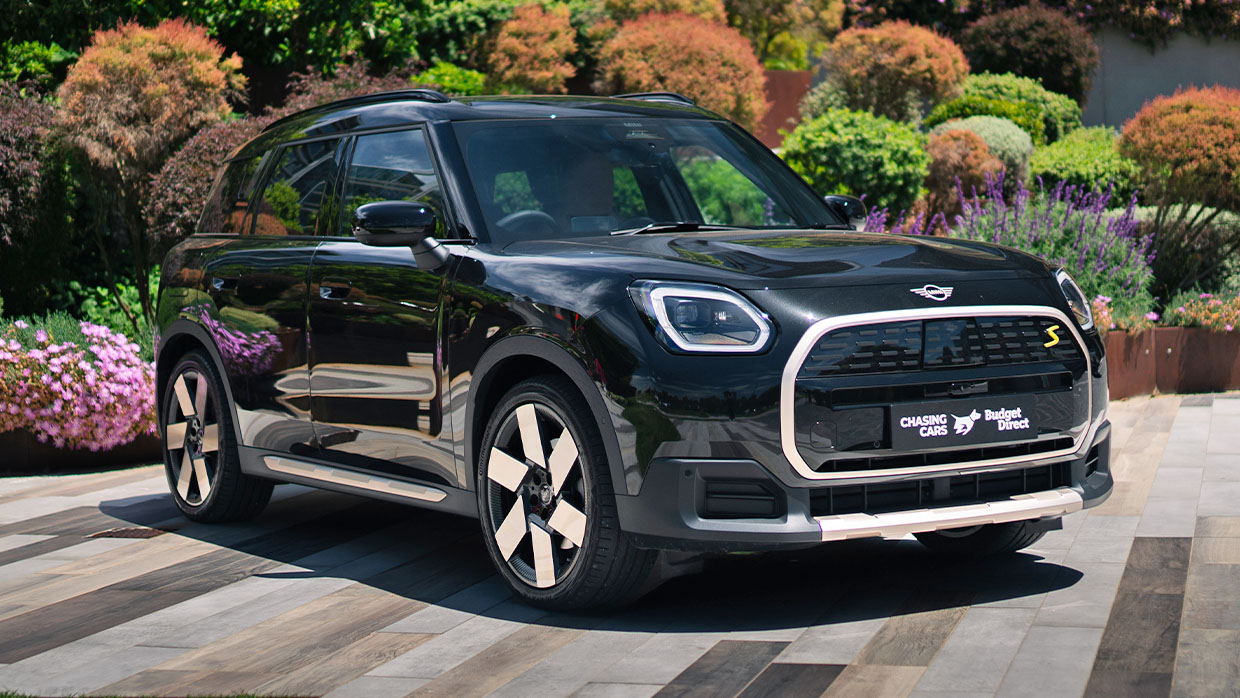
From how the suspension is calibrated through to the astute safety nannies, the Countryman consistently and confidently pulls ahead of many of its rivals, and that impressive layer of polish will make a meaningful difference to your everyday commute.
A surprisingly practical interior, relatively inoffensive price and a vivid sense of character; the Countryman SE is a vehicle we wanted to love at first sight of its lovable exterior, and by the end of our week of testing it was clear that there was substance behind the style.
Key specs (as tested)
About Chasing cars
Chasing Cars reviews are 100% independent.
Because we are powered by Budget Direct Insurance, we don’t receive advertising or sales revenue from car manufacturers.
We’re truly independent – giving you Australia’s best car reviews.
The estimate provided does not take into account your personal circumstances but is intended to give a general indication of the cost of insurance, in order to obtain a complete quote, please visit www.budgetdirect.com.au. Estimate includes 15%^ online discount.
^Conditions Apply
Budget Direct Insurance arranged by Auto & General Services Pty Ltd ACN 003 617 909(AGS) AFSL 241 411, for and on behalf of the insurer, Auto & General Insurance Company Limited(ABN 42 111 586 353, AFSL 285 571).Because we don’t know your financial needs, we can’t advise you if this insurance will suit you. You should consider your needs and the Product Disclosure Statement before making a decision to buy insurance. Terms and conditions apply.
Indicative quote based on assumptions including postcode , 40 year old male with no offences, licence suspensions or claims in the last 5 years, a NCD Rating 1 and no younger drivers listed. White car, driven up to 10,000kms a year, unfinanced, with no modifications, factory options and/or non-standard accessories, private use only and garaged at night.
^Online Discounts Terms & Conditions
1. Discounts apply to the premium paid for a new Budget Direct Gold Comprehensive Car Insurance, Third Party Property Only or Third Party Property, Fire & Theft Insurance policy initiated online on or after 29 March 2017. Discounts do not apply to optional Roadside Assistance.
2. Discounts do not apply to any renewal offer of insurance.
3. Discounts only apply to the insurance portion of the premium. Discounts are applied before government charges, taxes, levies and fees, including instalment processing fees (as applicable). The full extent of discounts may therefore be impacted.
4. We reserve the right to change the offer without notice.